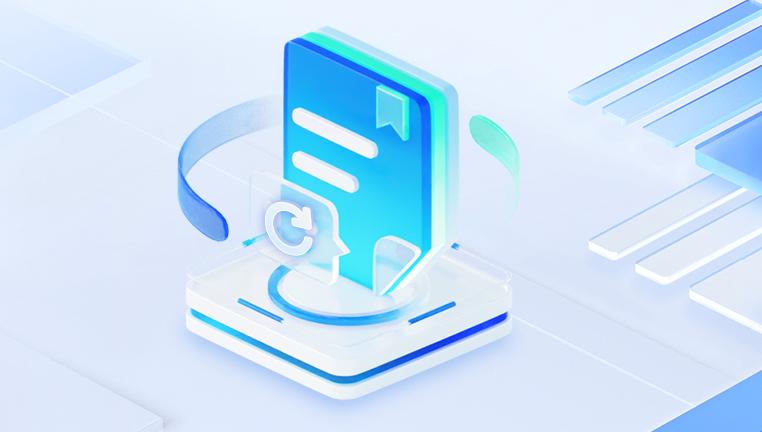How to fix a word file that is corrupted
Microsoft Word is one of the most widely used applications for creating, editing, and sharing text documents. From academic papers to business contracts, Word files often contain information that is difficult or sometimes impossible to replace. However, these files aren’t immune to problems. File corruption can render a Word document partially or completely unreadable, displaying garbled text, missing images, or strange error messages.
Chapter 1 – Word File Corruption
A Word file is essentially a structured package of text, formatting, images, metadata, and sometimes embedded objects. This structure is stored in a specific XML-based format (in DOCX files) or a binary format (in older DOC files). Corruption happens when part of that structure becomes damaged, either making Word unable to read the document or causing parts of it to display incorrectly.
1.1 Common Causes of Word File Corruption
Several factors can lead to corruption, including:
Sudden Power Loss or System Crash
If your computer shuts down unexpectedly while a Word file is open, unsaved changes or partially written file data can result in corruption.

Faulty Storage Devices
Bad sectors on a hard drive, SSD errors, or issues with USB flash drives can damage stored files.
Malware or Viruses
Malicious software can damage Word files directly or indirectly.
File Transfer Errors
Copying a file via unstable network connections or faulty cables can cause data loss.
Software Bugs or Compatibility Issues
Using outdated Word versions or incompatible add-ins may cause files to save incorrectly.
Interruption During Saving
Cancelling a save process or forcing Word to close during saving can corrupt the file.
1.2 Symptoms of a Corrupted Word File
Signs your file might be corrupted include:
Word refuses to open the file and displays an error.
Parts of the text are replaced with strange characters.
Embedded images or objects are missing or distorted.
The document formatting is broken.
Word crashes when trying to open the file.
Chapter 2 – Initial Steps Before Repair
Before you attempt any repair, follow these quick steps:
Make a Backup Copy
Always work on a copy of the corrupted file to avoid making the problem worse.
Check Other Devices
Sometimes the corruption appears device-specific—try opening the file on another computer.
Scan for Malware
Use antivirus software to ensure the corruption isn’t caused by malicious code.
Check the File Extension
Make sure the file has the correct extension (.docx or .doc).
Chapter 3 – Built-In Word Repair Tools
Microsoft Word offers built-in tools designed to handle file issues.
3.1 Open and Repair
Open Microsoft Word.
Click File → Open.
Browse to the corrupted file.
Click the drop-down arrow next to Open.
Select Open and Repair.
This method tells Word to attempt an automatic repair before displaying the file.
3.2 Recover Text from Any File
If the above method fails:
Open Word.
Click File → Open.
Change the file type dropdown to Recover Text from Any File (.).
Select your corrupted file and open it.
This will extract readable text, though formatting may be lost.
3.3 Using AutoRecover
If your file became corrupted during editing:
Open Word and go to File → Info.
Click Manage Document → Recover Unsaved Documents.
Search for a version created before the corruption occurred.
Chapter 4 – Manual Recovery Techniques
If Word’s tools don’t work, try manual recovery.
4.1 Inserting into a New Document
Open a blank Word document.
Go to Insert → Text from File.
Select your corrupted file.
This may bypass structural issues by importing only readable content.
4.2 Opening with a Different Program
Some alternative editors like LibreOffice Writer, Google Docs, or WPS Office can open Word files that Microsoft Word cannot. Once open, save it as a new Word file.
4.3 Converting the File Format
Try renaming .docx to .zip and opening it—Word DOCX files are actually ZIP archives.
Extract the contents and look for word/document.xml, which contains the raw text.
4.4 Using Notepad or a Text Editor
If nothing else works, open the file in Notepad++ or similar. While formatting will be lost, you may recover important text.
Chapter 5 – Third-Party Repair Tools
Panda Repair uses advanced data recovery and repair algorithms to scan and reconstruct damaged Word documents. Its process is designed to ensure maximum data recovery while keeping your document’s original structure intact.
Core Features:
Deep File Scan – Detects and analyzes damaged elements in the Word file.
Data Reconstruction – Recovers text, formatting, tables, images, and embedded objects.
Preview Function – Allows you to check the repaired file before saving.
Backup Protection – Keeps an untouched copy of the original file for safety.
Steps to Repair a Corrupted Word File with Panda Repair
Install and open Panda Repair.
Click Browse to locate your corrupted Word file.
Select Repair to start the recovery process.
Preview the restored content for accuracy.
Save the repaired document to a secure location.
Benefits of Using Panda Repair
Recovers both simple and complex Word documents.
User-friendly interface, suitable for beginners and professionals.
Maintains original formatting and layout.
Minimizes the risk of further data loss.
With Panda Repair, you can restore important Word documents quickly and effectively, avoiding the frustration of losing critical work or valuable content.
Chapter 6 – Advanced Recovery Using Previous Versions
If File History or System Restore is enabled:
Right-click the corrupted file.
Select Properties → Previous Versions.
Choose a version from before the corruption and restore it.
Chapter 7 – Preventing Future Corruption
Always save documents frequently.
Use cloud backup solutions like OneDrive or Google Drive.
Keep your system and Word updated.
Avoid abrupt shutdowns.
Regularly back up important files.
Corrupted Word files can be frustrating, but they’re not always lost causes. Between built-in Word recovery tools, manual extraction methods, and professional repair software, there’s a strong chance you can recover most—if not all—of your data. Taking preventive measures will also greatly reduce the risk of future corruption.

